Stroom Invest interview / artist Alejandra López
Alejandra López (Elche, Spain) is looking for the small things in life, the daily things we need to pay attention to. Life passes by otherwise, and nothing lasts forever: even art. She does not need her art to be sustainable, it’s in the here and now where art has the most value. For example, her installations are created for specific places. The food she makes with her collective disappears while eating, and she makes piles of (delicate) drawings which tell a different story every time they are arranged for a display or installation. Her art shows how you can understand your surroundings better by zooming in on the ‘unimportant’ phenomenon: what is the myth of the silverfish? I’m dedicated to finding out after this interview.
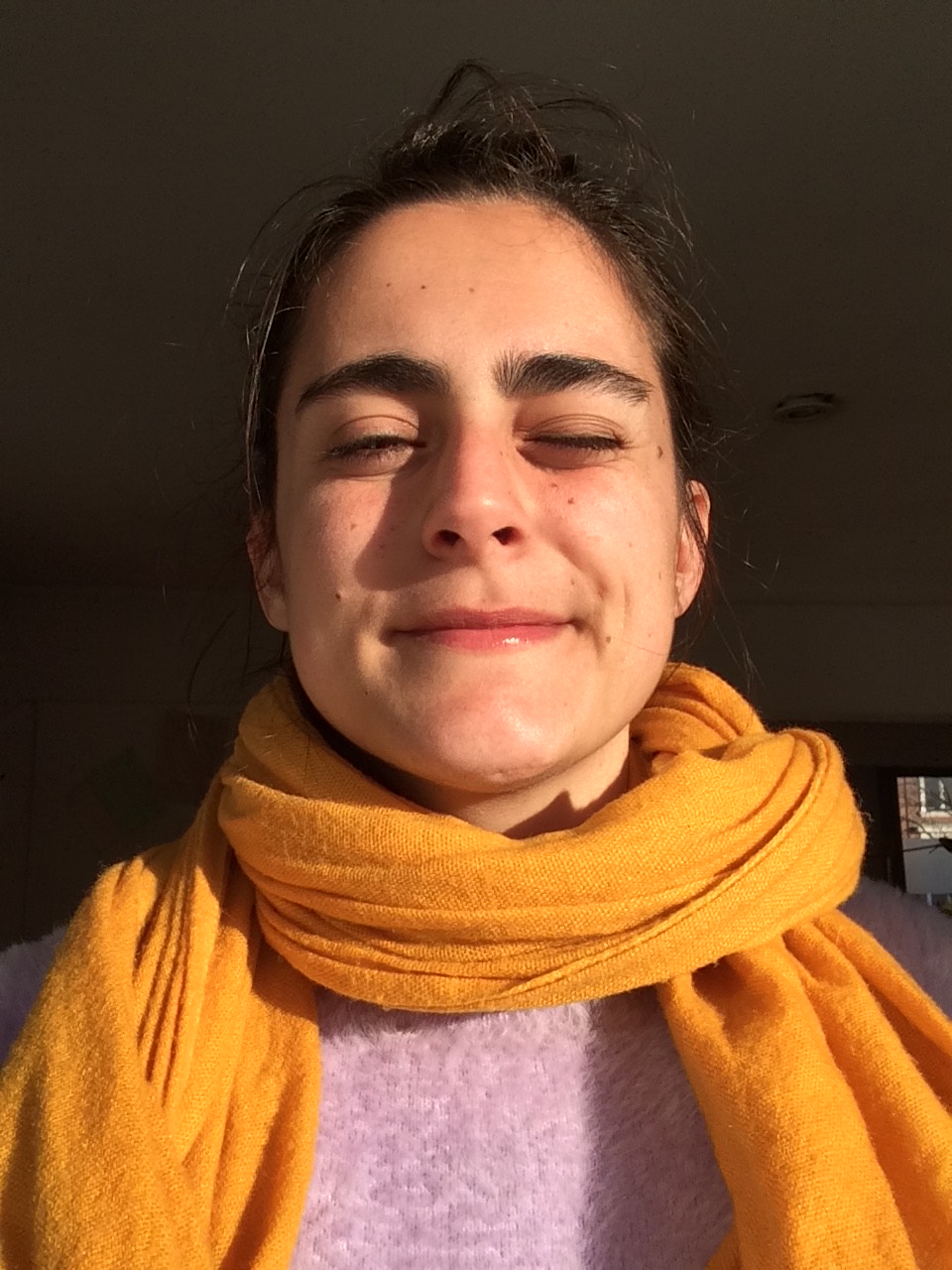
You were born in Spain, studied in England and The Hague, where you are based now. Is there a place that suits you best?
I don’t know exactly what that means, I mean, at the moment I’m here. I think at some point I would be very happy to go back somehow. Or to have a bit of a foot here and a foot in Spain. Because my family is there, and I think there is always going to be a link. But I find it very difficult to think in absolutes that way. Right now, this works because it’s where my friends are, but I will always have a link to the UK and Spain as well.
These places are very different, do they influence your art?
Yes, I think so. A lot of my work is about daily experiences and about the structures, the systems, and the logic that support or don’t support those experiences. Aesthetically there are a lot of choices I have made which maybe come from my materials and the things that I have seen when growing up. But, I also think that they are somehow built-in, the different characteristics of the people in certain places, with their different senses of humour and ways of communicating.
Can you tell us a bit about your artistic background?
I studied BA in drawing, which was one of the few BAs dedicated to drawing. The idea on “thinking through drawing” started here for me. It also means that the process is quite important, or maybe even the main part of it. It seems that this has stuck with me and it’s something that I continue to do.
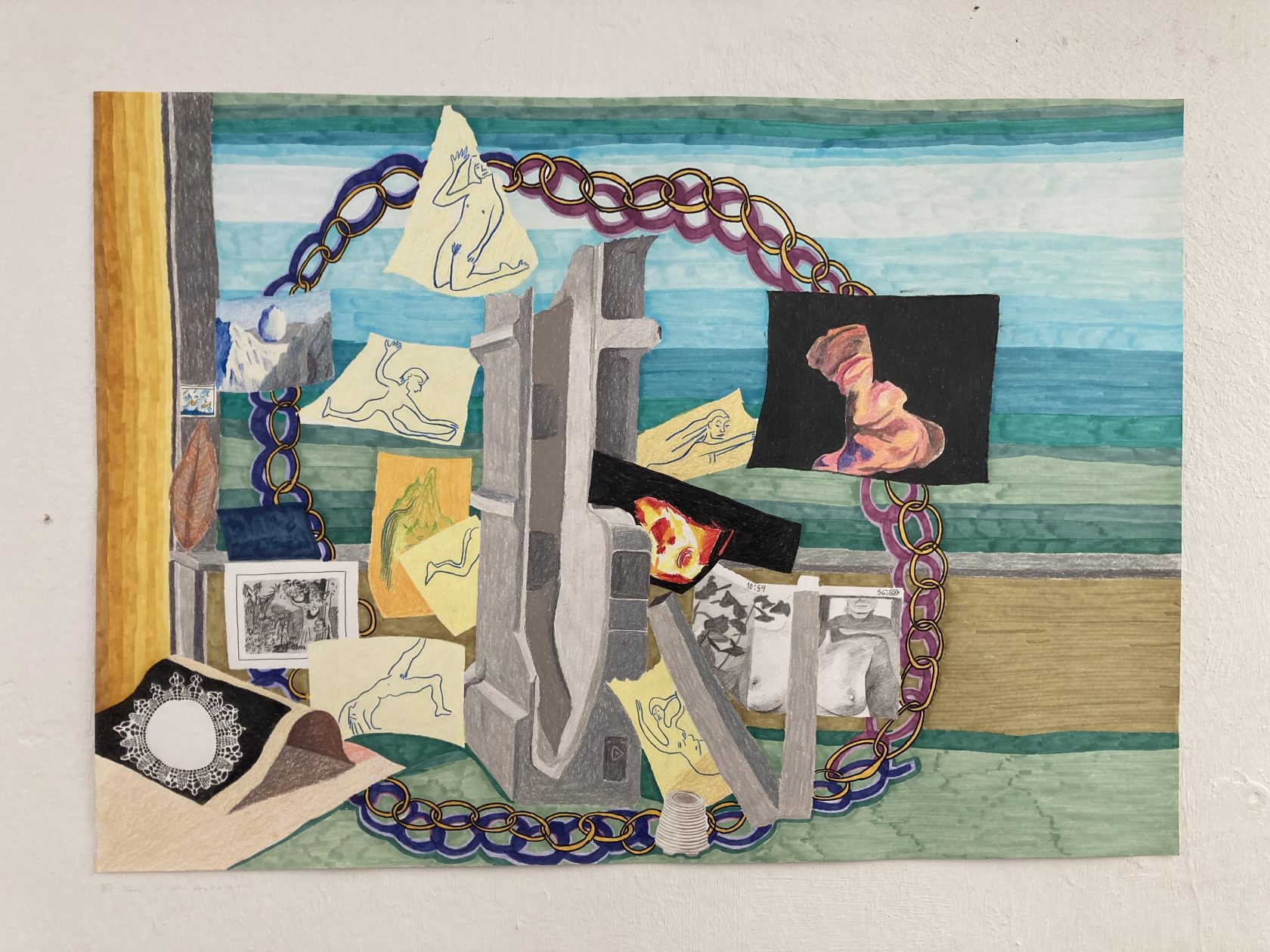
I also stumbled upon this concept in your bio: ‘Thinking through drawing in order to re-frame and digest found imagery, stories, and personal encounters.’ It sounds quite meditating to me. Like you understand your surroundings better by drawing it. Is that what draws you towards this medium?
What I like about drawing is that it is a task and an activity that kind of exists in between things. To get into an emotional way of thinking, of being. It is a useful tool to process information. On a very practical level, I draw to think about things, to understand or not to understand or just process. In general, I find it difficult to work with very permanent materials. I like the flimsiness of paper and found objects, fun things that I sort of stumbled upon. But it’s not just drawings that I work with. I also make installations. I’m just very bad at documenting these.
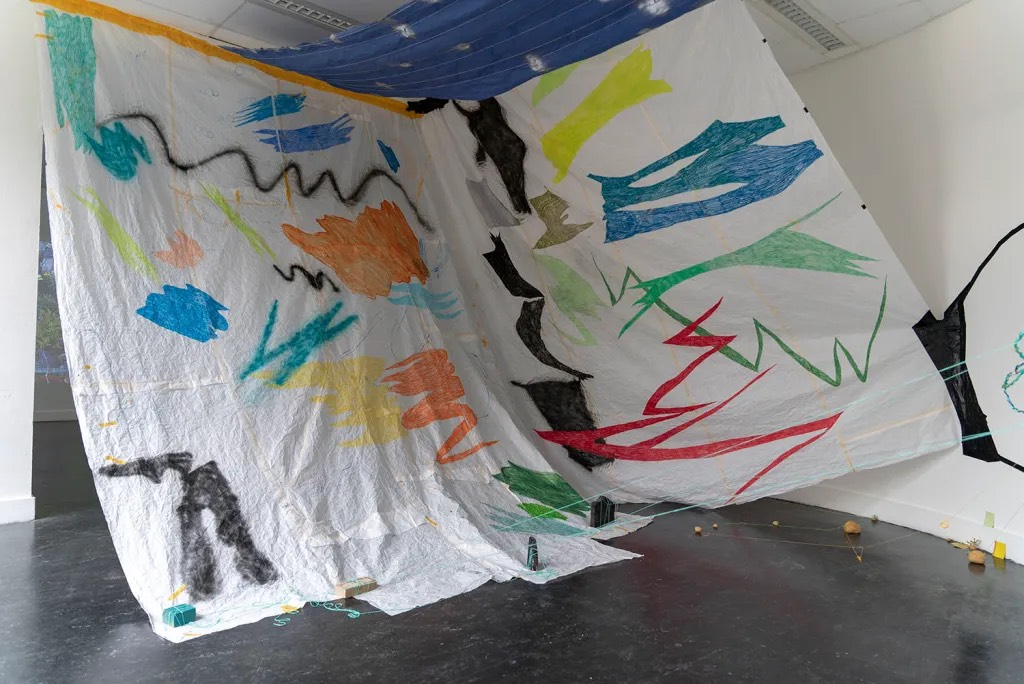
Yes, I saw you were also working with flour in your installations, that is certainly not very permanent.
Often the drawing is what remains, but a lot of my works happen in stages. In a way, each stage is different, so then it’s also difficult to say what is the finished work. For example, I have worked with ice before and made sculptures that melt in time. That project you were talking about with flour was my graduation project at the KABK. Because of the covid measurements, we had quite a long time to finish the project. I had the exhibition space for two months and I was making these drawings with the flour on the ground. At the same time, we had a bit of a mice infestation at the KABK, and mice really like flour, which I didn’t know. But it was quite beautiful, because I had made these drawings with my fingers in the flour, and this infestation meant that these mice were also leaving their marks like they were drawing as well. I like to see how things decay or what is left behind.
You use a lot of different mediums and materials. Do you start with the medium, or do you start with the concept and find a medium that suits the message the best?
It really depends, sometimes it’s the material, not so much a medium, that starts an inquiry. Other times it’s a story or a specific idea that comes, and then I try to go further with that. Also, I have collections of things that may accumulate. A lot of these materials and stories come back into the work. I think it’s the process of translation; the reintegration of some elements that were there at some point and come back. This happens to everyone in life. Things sort of come back.
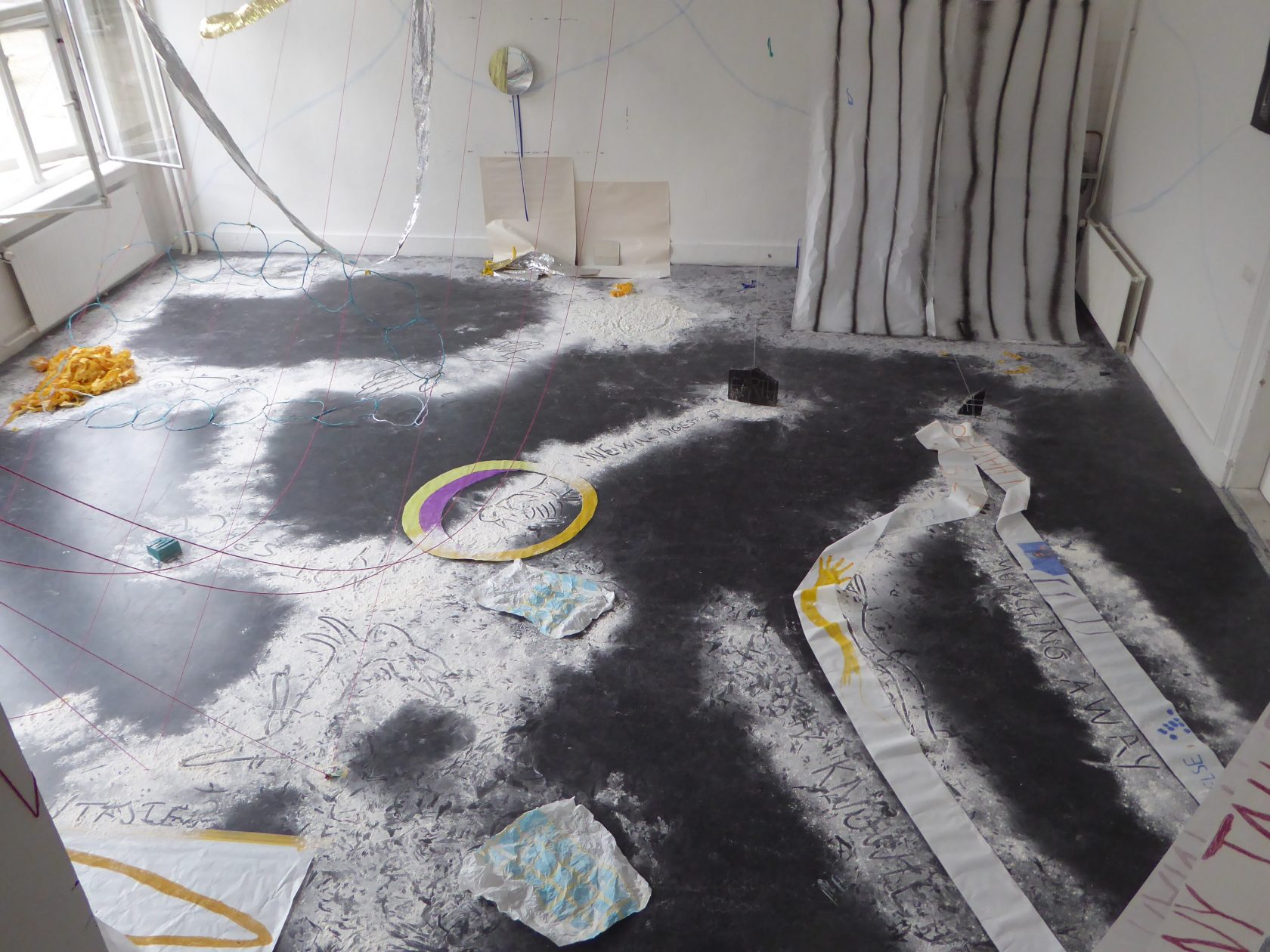
Is there a specific story or concept you would like to share with your audiences throughout your art?
In general, my work is about storytelling, but those stories are very much about the mundane or daily things that happen. It’s about paying attention to the things that you can otherwise miss. It’s about looking. Also, some smaller stories and moments are more literally featured in my work. For example, at the moment, I’m still working on a project: The myth of the silverfish. I had an infestation of silverfish in my house, and they have become kind of a beacon for storytelling. Silverfish are very old insects, one of the oldest, and we don’t have a story for them. It’s like one of these creatures we don’t have a myth for. They also eat paper, which means they also eat stories. But I still don’t really know where that leads to yet.
Do images say more than words?
That’s cheesy, I don’t know, they say different things. Language is a specific system, there are limits to it, which are sometimes useful and sometimes are not. I think it’s a different way of communicating.
Because you also like to work with language, right?
Yes, and I think that there are things you can access with language that you cannot access with images and vice versa. I’m still trying to figure out how to combine the two and what I want to do with each of them.
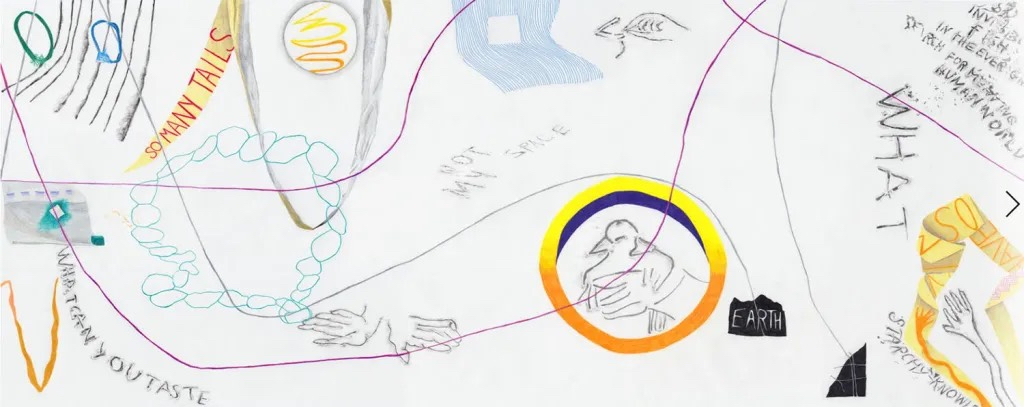
What are you currently working on?
So today, I was weaving, which I am trying to embrace. I’m also working on an animation/film. But those are very early stages. It’s hand-drawn, but I also use a green screen to mix with other animations I’ve done.
When is an art piece or project finished for you?
It depends, some drawings are finished. I don’t know how to explain that, sometimes it just feels like it’s finished. But most of the time things somehow come back to my work, so maybe they are finished for just a moment. I tend not to touch them again, but they will come back.
Maybe also by arranging them together, making a different story.
Exactly.
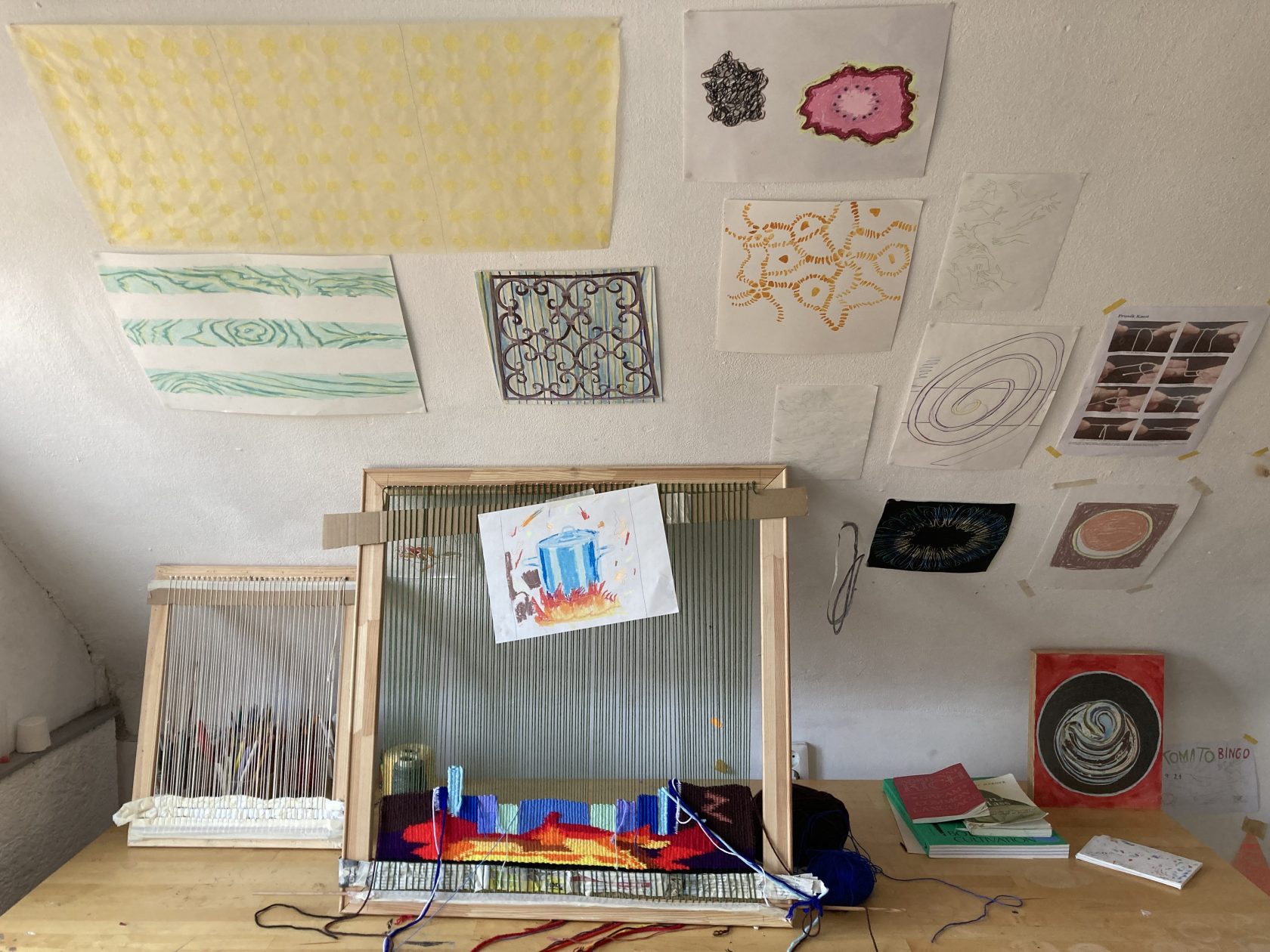
Can you tell something about your artist collective and initiative ‘Nice Flap’?
It’s a life drawing collective that I have with my studio mate Annemarie Wadlow. We started doing it when we were at the masters because we wanted to draw people/bodies, and we also wanted to create social moments to meet more people. We have continued since then. In the beginning it was more of a straightforward live drawing club and now it’s starting to become a bit more experimental, or a lot more. We are trying to use it as a project space or platform for artists to show work as well. We kind of try to commission an artist to make a piece that can exist in conjunction with a live drawing session. It is the idea to look both at the bodies and the art piece without any distractions, with the task of drawing. It allows you to concentrate and meditate on what you’re seeing.
How did you guys come up with the name ‘Nice Flap’?
My friend wanted to start a feminist magazine that was called Nice Flaps, it was kind of a joke. Then it sort of came up when we were looking for a name. It was catchy, and also ‘Flap’, so many things can be a flap.
How important are these kinds of experiments and collaborations for you?
They are quite important to meet new people and to learn about my work. It has been important for my self-confidence. I think it’s nice to share something with somebody else. Ego disappears, and you are invited to come up with something else, something bigger.
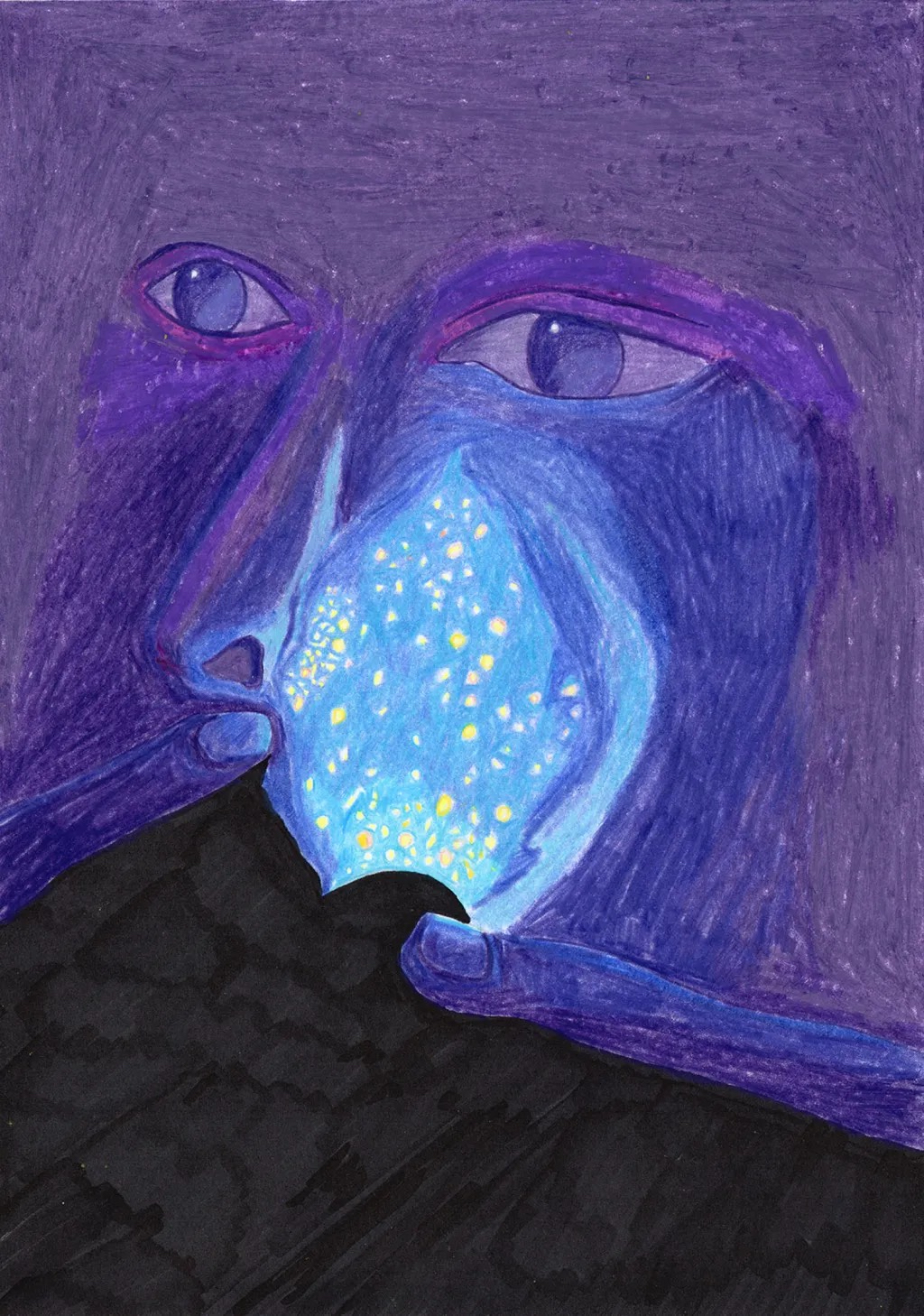
When did you start combining food and art?
‘Lena & Ale’ started, maybe in 2019, because Lena Longefay and I were both working in horeca. I was working in the kitchen and we were just talking about food a lot. We were talking about how much we feel like making an art piece when we’re preparing a dish. So, then we started experimenting. We were lucky because it is also becoming a trendy topic: food and art. Now, we’re trying to figure out exactly how we want it to be and where we want to go with it. It has been fun to have a specific and practical way of investigating subjects that we put directly into our bodies and digest.
Do you exhibit it?
We’ve done two kinds of things so far. We’ve done artistic catering, where people are sitting down and are fed a meal following a concept as well. And we’ve done more like a setup for an installation which is edible. So far, everything has been for a specific event.

Where do you see yourself going as an artist? Or what is your aim for the future?
I hope I can carry on making, and playing around, and make work with friends, and show it to people. I would like to create a sustainable way of living, but I like to teach as well.
Since you also make installations and sculptures, do you need (spatial) requirements for exhibiting your art?
No, a part of what I like about making installations is that I react to the given space. I like to adapt. The work becomes something else in a different space, but I’m open to that.
Do you have a dream place in mind to exhibit your art?
I am really craving to have a show where I can go wild with the space, but I don’t have a specific real place in mind. Still, I would like to have a show in a place with an inside and outside space. A place where you can go crazy and climb and dig, that would be really fun.

Stroom Invest Week is an annual 4-day program for artists who were granted the PRO Invest subsidy. This subsidy supports young artists based in The Hague to develop their artistic practice so that artists and graduates of the art academy can continue to live and work in The Hague. To give the artists extra incentive, Stroom organises this week consisting of studio visits, presentations and several informal meetings. The intent is to broaden the visibility of artists from The Hague through future exhibitions, presentations and exchange programs. Stroom Invest Week 2022 will take place from 7 to 10th of June.